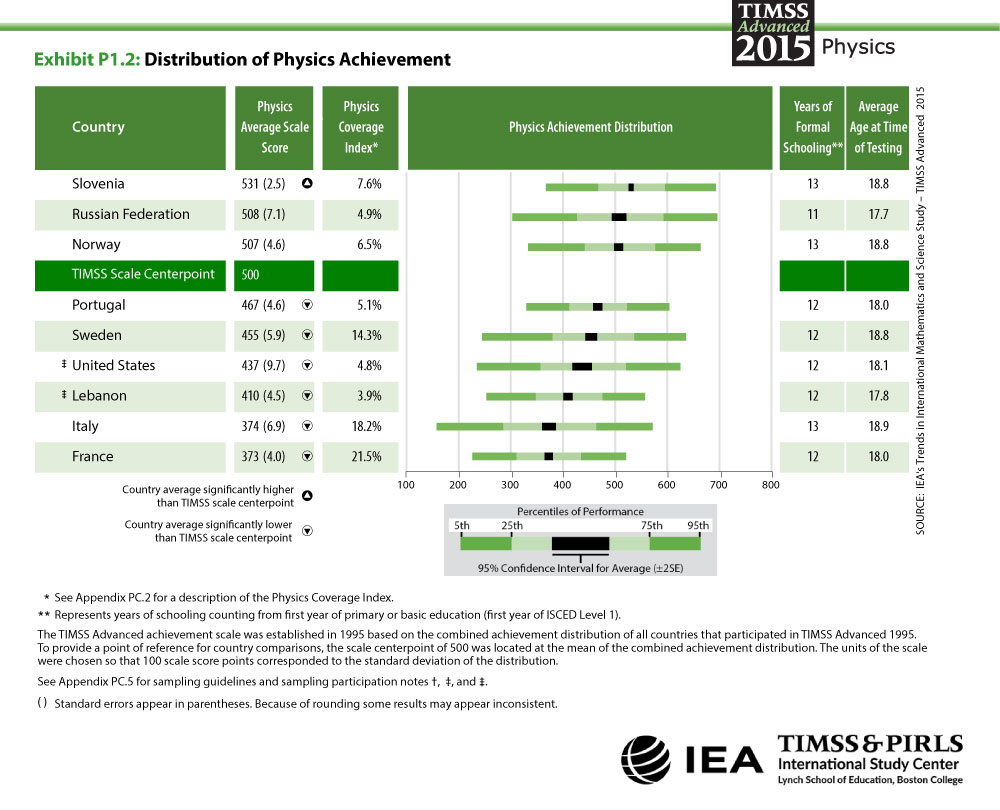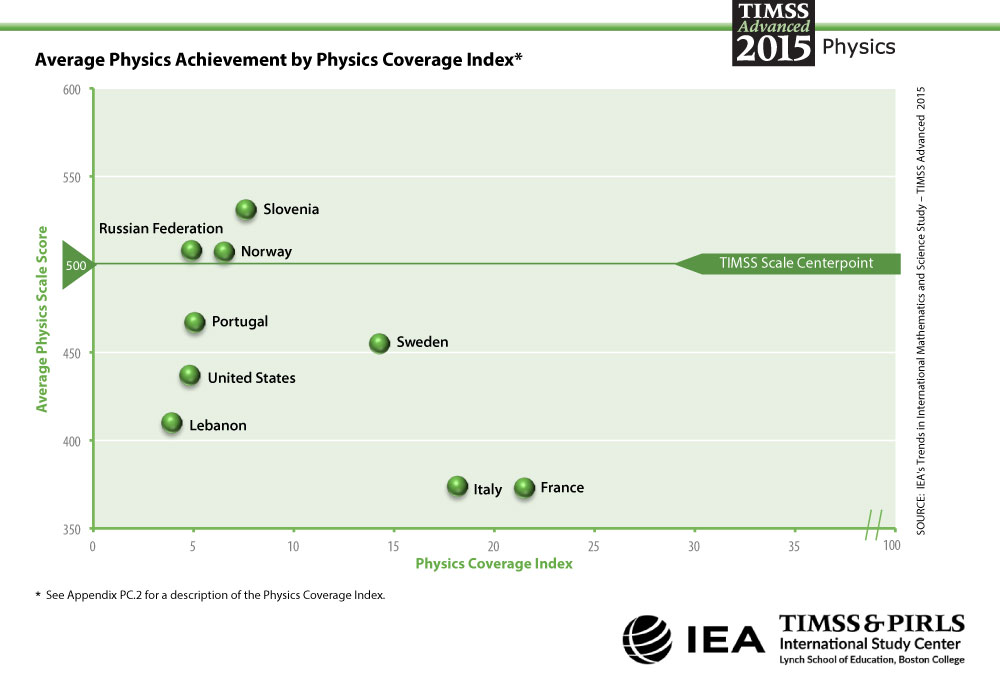The key policy issue raised by TIMSS Advanced is the “yield” of an educational system, in terms of the number of STEM specialists a country is educating to a high level in a globally competitive environment. Thus, TIMSS Advanced presents the achievement results in the context of the percentages of students receiving the most advanced physics education in each of the countries.
At the end of upper secondary school, the population of students becomes increasingly select. First, varying proportions of the age cohort may no longer be in school, because students either completed programs with an earlier exit point, or they have dropped out of school. Second, and very relevant for this study, there is a range of program and curricular choices available to students who continue in school so that typically not all students at this level study all subjects, or at least not at the same intensity.
Considering all of the students in an age cohort that possibly could have been enrolled in physics courses, the percentages of students actually surviving the pipeline and having studied this complex content is relatively small and varies substantially from country to country. Students will have remained in school and studied challenging content in physical science for a large part of their school careers.
The TIMSS Advanced coverage index quantifies the variation in the proportion of students taking physics courses in the final year of secondary school. It may be helpful to consider this index as a fraction expressed as a percentage. First, TIMSS used census data to estimate the size of the entire national population of students that could have been assessed, if all of the students in the age cohort were still in school and taking advanced courses in their final year of school. That is the denominator. Then, as the numerator, TIMSS used the results of the study to estimate the size of the population of students who actually studied physics.


